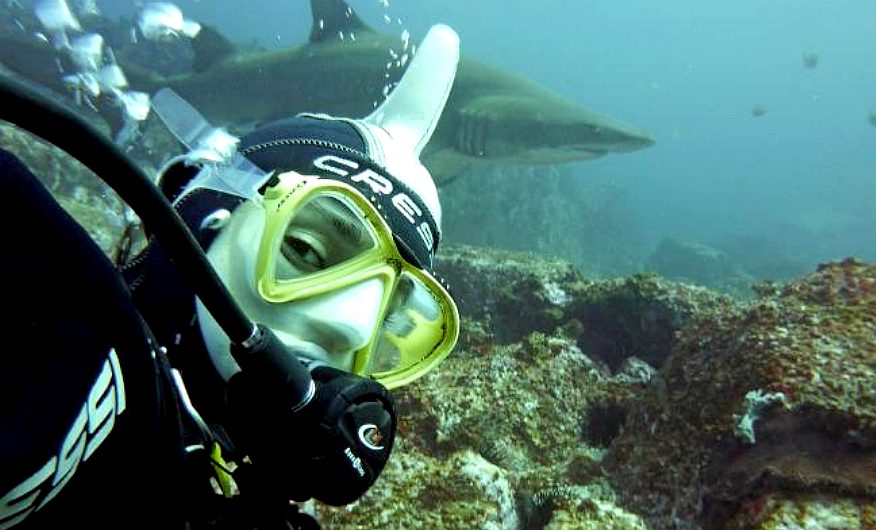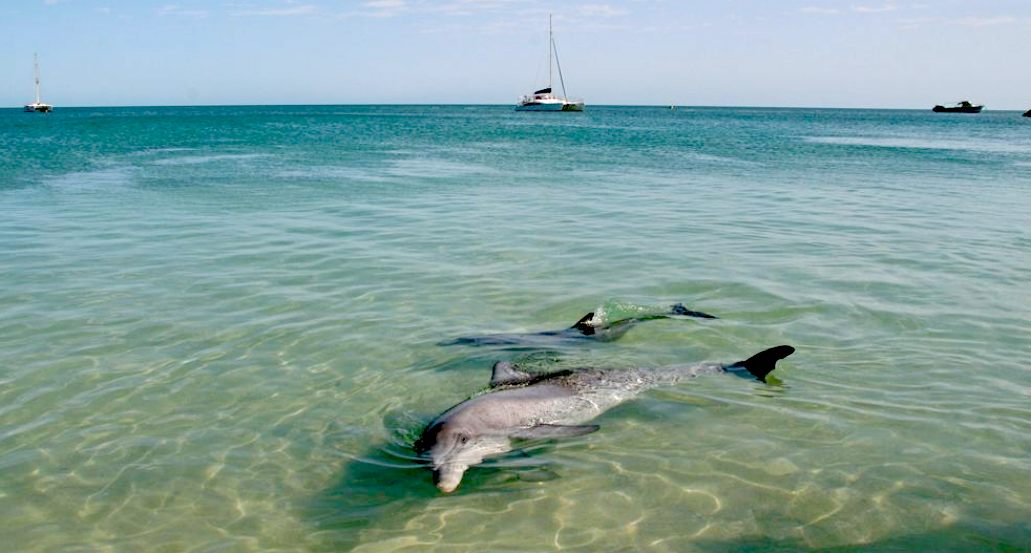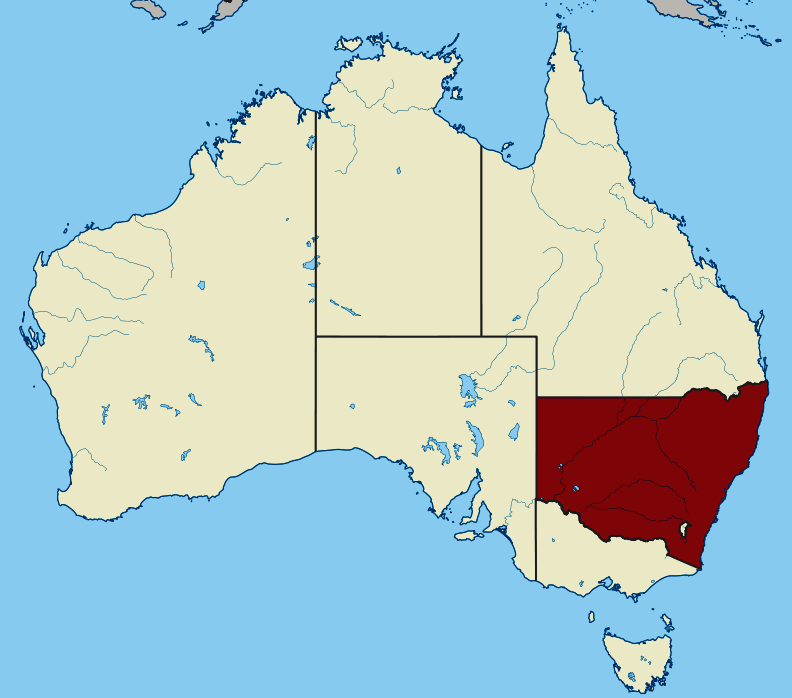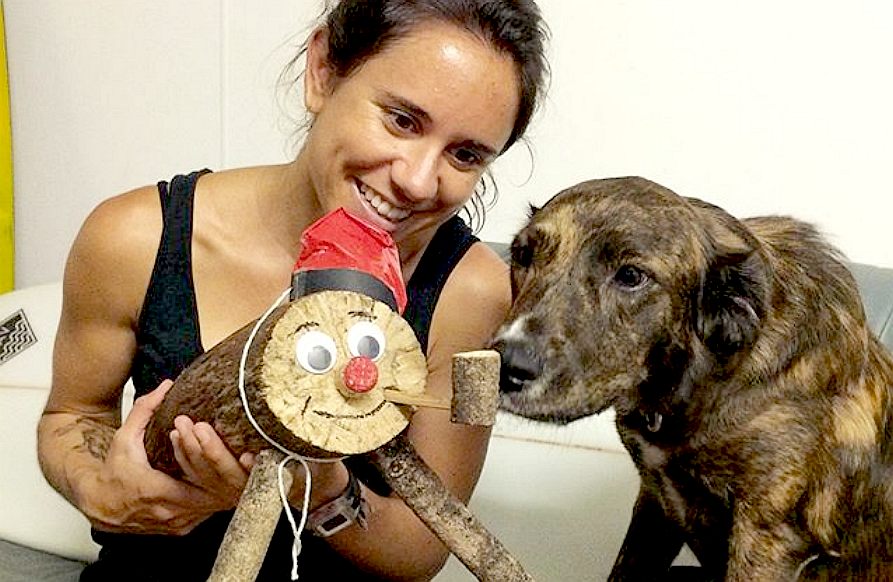|
SWAMPY
THE SEA WALLABY

SWAMPY -
This is one cool wallaby. Presumably fed up with life in the
swamp, he looked out over the bay and decided that a life
at sea was for him. Kangaroos and wallabies are good swimmers but this fella was a long way from shore
and clearly in trouble. Humans
frequently get themselves into similar trouble and sometimes
drown as a result.
ABC
NEWS 9 DECEMBER 2015
A swamp wallaby found swimming more than a kilometre offshore from the NSW north coast has been rescued by a group of marine students.
The students, from the National Marine Science Centre, found the wallaby — now nicknamed 'Swampy' — lost at sea while on a diving trip near Arrawarra, north of Coffs Harbour, on Monday.
The exhausted wallaby swam towards their boat, where they pulled him in and calmed him down.
They turned the boat around and headed back to shore, releasing him on a nearby beach.
Laura Sanchez-Peregrin was among those on the boat, and said at first they were not quite sure what it was doing so far out at sea.
"We see this thing swimming — it's like a hairy thing," she said.
"At first I thought it was a seal, but we came closer and it was a big wallaby, maybe a 25-kilogram wallaby — a big male.
"He looked really, really exhausted."

MISS
OCEAN DOWN UNDER - Laura Peregrin is seen here
calming Swampy the ocean going wallaby. One can imagine how
difficult it was to land this furry marsupial. Full marks then
to all involved.

TO
THE RESCUE - Ian Shaw, Jesse Madden and Laura
Sanchez-Peregrín are seen here rushing back to shore with
poor old Swampy.

SUBDUED
- The trio used a rope to secure the wallaby's legs and covered his head with a towel to keep him calm in their second rescue attempt.
Animals sometimes harm themselves and their rescuers from
panic. The trick is to take control with sufficient force to
help an animal, but not harm it. Difficult at the best of
times.
Ms Sanchez-Peregrin said she and the other divers, Ian Shaw and Jesse Madden, decided they had to help him get home, but it was no easy task.
"We decided to help him, but it was really difficult to bring him on board," she said.
"It's a really small tinny, and he had really long claws, so it was pretty scary and he wouldn't let us grab him."
They eventually used towels and a rope to secure him and get him on board, where he lay still in the centre of the boat.
She said he was in remarkably good condition and took off shortly after they dropped him back on shore.
"He stayed on the beach for two minutes, super exhausted standing there, couldn't move at all," she said.
"And then yeah, he just went — hopped off and waved goodbye."
Swamp wallabies have been known to swim, but Ms Sanchez-Peregrin said the group did not know what led this one so far out to sea.
"Maybe he got scared by a dog or something," she said.
"And was taking a swim or having a splash around, and suddenly this dog came and he swum in that direction — and then got lost."

DIVING -
Laura Sanchez Peregrín snaps a shark selfie during a diving trip. The marine biologist is researching kelp forests while she studies in
Australia and is a keen
diver.
THE DAILY TELEGRAPH, NSW SYDNEY 10 DECEMBER 2015
DIVERS RESCUE SWAMP WALLABY A MM OFF COFFS HARBOUR COAST
“It was the weirdest thing I’ve seen in a long time,” said Laura Sanchez Peregrin after helping to rescue a 30kg swamp wallaby swimming out at sea on Monday.
The 29-year-old Barcelona native was on a diving trip with friends and had just left Arrawarra Beach in Coffs Harbour when they spotted an unusual shape in the water.
“We had passed the point break which is about a kilometre off shore already and we saw this hairy thing floating in the water,” she said.
“I thought it was a seal actually because sometimes they come all the way up here but it was a wallaby, a massive male swamp wallaby.”
Realising the animal was in distress, Ms Sanchez Peregrin and friends Jesse Madden and Ian Shaw moved their small tinny closer and turned the motors off.
“Instead of swimming away he came closer to us,” she said.
“I guess he was quite desperate for him to approach the boat but when we tried to help him the first time, it was very difficult because he had these massive claws.
“It was quite dangerous to handle him so we actually gave up.
“We thought we couldn’t help him and we kept going thinking natural selection will do its thing. But then we looked at each other and said, nah this is not right... so we came up with this plan.”
Moving in closer, Mr Madden and Mr Shaw grabbed the wallaby’s legs while Ms Sanchez Peregrin put a towel on his head to calm him down.
“We did it the first time we tried, it was pretty quick.”
Once inside the boat, the exhausted marsupial remained calm all the way to shore before he was released into the shallows.
“He just jumped through the water and stayed there for a couple of minutes, just chilling there catching some breath and then he just hopped off.
“He was fine, he was massive though — he looked like a kangaroo.”
Ms Sanchez Peregrin, who is a marine biologist studying at Southern Cross University, said the whole affair was quite surreal.
“Not being Australian, for me every time I see a kangaroo I get excited but I’m a marine biologist, I didn’t really know they could swim.”

DOLPHINS
- Laura says: "Dolphins are awesome creatures: highly intelligent, communicative, playful, long-lived. And they surf waves and have sex for fun!!! When will people learn to appreciate these amazing beings?! They belong to the ocean, not to aquariums or seaworlds. Don't buy tickets, don't support these multimillionaire slaving industry. Want to see dolphins? Go to the ocean!!"
ABOUT
COFFS HARBOUR
Coffs Harbour, in Australia, is a coastal city located on the north coast of New South Wales about 540 km (340 mi) north of Sydney, and 390 km (240 mi) south of Brisbane. Its population was 45,580 in 2011 with the greater region having a population of 70,990 in 2012.
Coffs Harbour won an international "Bloom award" for population 20,001 - 75,000 in 2002. In addition an "Enhancement of the Landscape" in 2004 from the same organisation. Coffs Harbour's economy was once based mainly on bananas, now being superseded by blueberries as well as tourism and fishing.
The city has a campus of Southern Cross University, a public and a private hospital, several radio stations, and three major shopping centres. Coffs Harbour is near numerous national parks, including a marine national park. There are regular passenger flights each day to Sydney and Melbourne departing from Coffs Harbour Airport. Coffs Harbour is also accessible by road, by NSW TrainLink trains, and by regular bus services.
Coffs Harbour is one of many regional cities along the Pacific Highway between Newcastle and The Gold Coast. The city's close proximity to the centre of the mid and north coasts makes it a comfortable drive from either end of the highway. It has become a major service centre for those living between South West Rocks in the south and Grafton to the north.
Sawtell, 10 km south along Hogbin Drive from the city has become a satellite suburb of Coffs Harbour, with it increasingly referred to as being part of the city instead of its own entity as a town.
The surrounding region is dominated by coastal resorts and apartments with hinterland hills and mountains covered by forests, banana plantations, and other farms. It is the only place in New South Wales where the Great Dividing Range meets the
Pacific
Ocean.

COFFS
HARBOUR ATTRACTIONS
Coffs Harbour was the hub for a thriving banana industry. One of the biggest attractions is the Big Banana, one of the first of Australia's Big Things (it celebrated its 40th birthday in 2005), with the World's Largest Banana celebrating the region's best known export. There is also a popular underwater diving spot on a small natural reef.
The Coffs Harbour Jetty is an historically important timber wharf where coastal shipping once moved the timber from the hinterland. The jetty area is the subject of current
planning by Council and consultants to develop a cultural precinct and rejuvenated residential
area, a problem faced by many seaside towns worldwide.
Nearby, the Solitary Islands Marine Park preserves a diverse underwater ecosystem that mirrors the terrestrial biodiversity, covering the southern limit of northern tropical species and the northern limits of the southern temperate species. Muttonbird Island is accessible by walking along the breakwater from the harbour, with the nature reserve protecting a significant wedge-tailed shearwater breeding site. The Muttonbird Island footpath leads to a viewing platform where whales are often spotted between June and November.

NEW SOUTH WALES
New South Wales (abbreviated as NSW) is a state on the east coast of Australia. It borders Queensland to the north, Victoria to the south, South Australia to the west, the Tasman Sea to the east and surrounds the whole of the Australian Capital Territory. New South Wales' capital city is Sydney, which is also the nation's most populous city. In March 2014, the estimated population of New South Wales was 7.5 million, making it Australia's most populous state. Just under two-thirds of the state's population, 4.67 million, live in the Greater
Sydney area. Inhabitants of New South Wales are referred to as New South Welshmen.
The colony of New South Wales was founded in 1788. It originally comprised a much larger area of the Australian mainland and also included Lord Howe Island, New Zealand, Norfolk Island and Van Diemen's Land. During the 19th century, large areas were separated to form the British colonies of Tasmania, South Australia,
New
Zealand, Victoria, Queensland and the Northern Territory (1863).
Lord Howe Island remains part of New South Wales, while Norfolk Island has become a federal Territory, as have the areas now known as the Australian Capital Territory and the Jervis Bay Territory.

SEA
SKIPPY - Wallaby foi achado por estudantes do Centro Nacional de Ciência
Marinha. Grupo faria mergulho perto Arrawarra, na Nova Gales do
Sul.
PLANETA
BIZARRO 10 DECEMBER 2015
Wallaby é achado a mais de 1 km de distância da costa na Austrália
Um wallaby, animal que é parente dos cangurus, foi encontrado na segunda-feira (7) a mais de um quilômetro de distância da costa na Austrália. Estudantes do Centro Nacional de Ciência Marinha se depararam com wallaby durante uma viagem de mergulho perto Arrawarra, no estado da Nova Gales do Sul, na Austrália. Os estudantes capturaram o animal e o levaram de volta à terra firme.

SURFS
UP - New South Wales, Australia, is where a bunch of marine students from the National Marine Science Centre, have ‘rescued’ a wallaby, “lost at sea”.
Laura Sanchez-Peregrin is quoted as saying: “We see this thing swimming – it’s like a hairy thing. At first I thought it was a seal, but we came closer and it was a big wallaby, maybe a 25-kilogram wallaby – a big male. He looked really, really exhausted. We decided to help him, but it was really difficult to bring him on board. It’s a really small tinny, and he had really long claws, so it was pretty scary and he wouldn’t let us grab him.”

SPONSORED
SWIM - You’ve got to love these stories: The wallaby has trained, gathered sponsorship pledges and set out on what he hopes will be record-breaking swim. A few hundred yards from home, he’s acocsted by a gang of humans in a boat, who drag him from the water and return him to dry land.
They even give him a new name, Swampy.
Laura is quoted as saying Swampy, known to his pals as ‘Flipper’, was “remarkably good condition… He stayed on the beach for two minutes, super exhausted standing there, couldn’t move at all. And then yeah, he just went – hopped off and waved goodbye.”




PHOTOGRAPHY -
Thankfully for us Laura is a keen photographer. If it were not
for this we would not have this wonderful story to tell and
the pictures to illustrate the event.

LINKS
Daily
Telegraph news New South Wales divers rescue swamp wallaby a kilometer
off Coffs Harbour coast
Twitter
hashtag wallaby
Anorak
UK strange but true wallaby rescued swimming kilometre
offshore during sponsored swim
G1
Globo planeta bizarro noticia wallaby e achado a-mais de 1 km
distancia da costa na Australia
AWW
latest news health how to identify skin cancers
ABC
news Australia 2015-12-09 wallaby found swimming kilometre
from nsw coast rescued
Wikipedia
New_South_Wales
Wikipedia
Coffs_Harbour
https://en.wikipedia.org/wiki/New_South_Wales
https://en.wikipedia.org/wiki/Coffs_Harbour
http://www.dailytelegraph.com.au/news/nsw/divers-rescue-swamp-wallaby-a-kilometre-off-coffs-harbour-coast/story-fni0cx12-1227640538896
https://twitter.com/hashtag/wallaby
http://www.anorak.co.uk/426525/strange-but-true/wallaby-rescued-swimming-kilometre-offshore-during-sponsored-swim.html/
http://g1.globo.com/planeta-bizarro/noticia/wallaby-e-achado-a-mais-de-1-km-de-distancia-da-costa-na-australia.ghtml
http://www.aww.com.au/latest-news/health/how-to-identify-skin-cancers-22900
http://www.abc.net.au/news/2015-12-09/wallaby-found-swimming-kilometre-from-nsw-coast-rescued/7014846

A
GIRLS BEST FRIEND
- Laura with her faithful companion, Birra, examine a yuletide
log.
|















